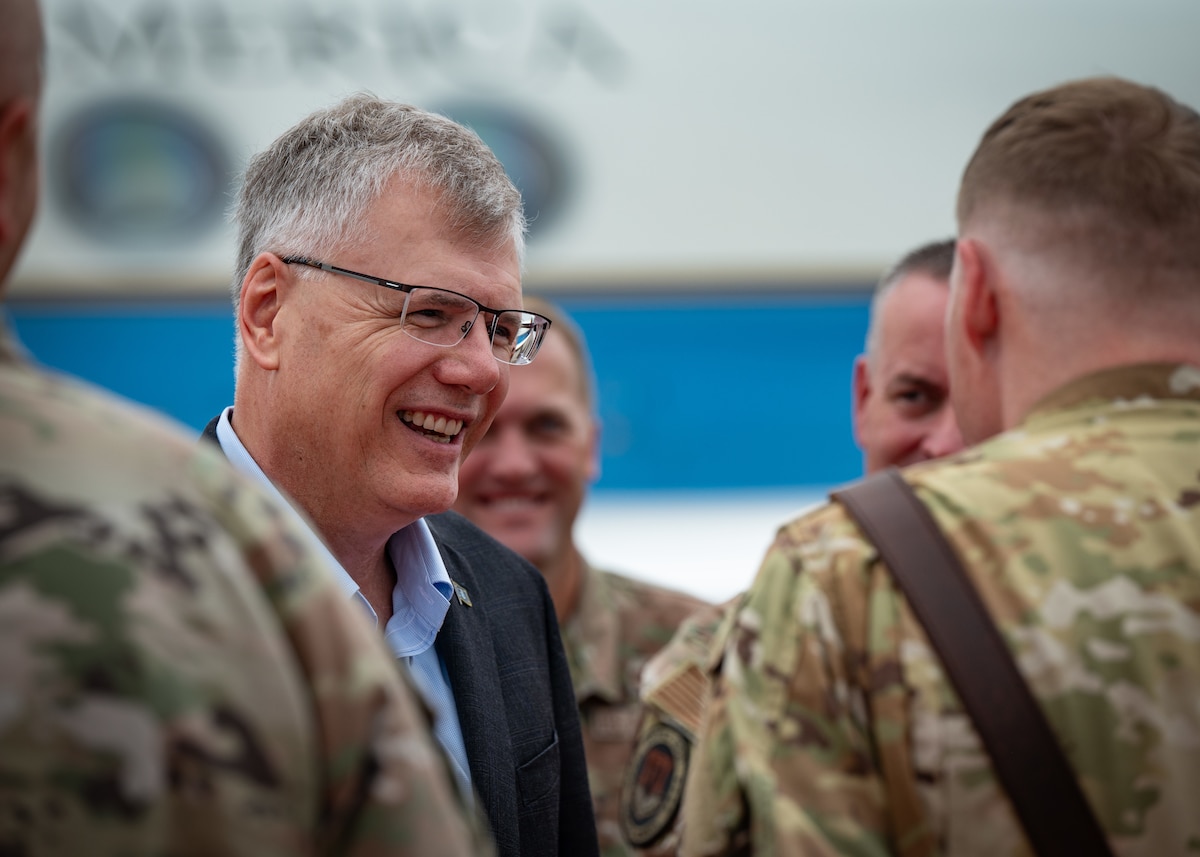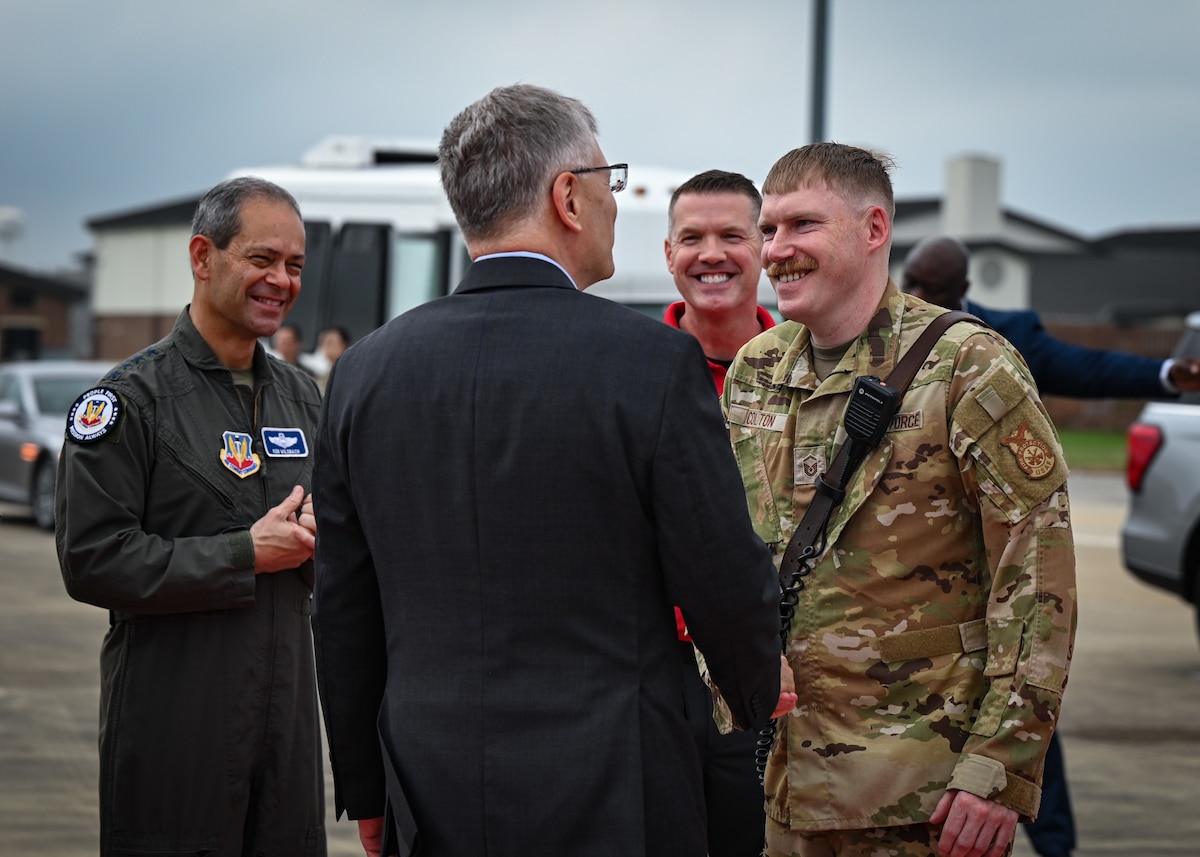Secretary of the Air Force Troy Meink concluded an immersion tour of Headquarters Air Combat Command and Joint Base Langley-Eustis wings June 27, reinforcing the Air Force's commitment to maintaining a technological edge, fiscal responsibility and robust intelligence capabilities to deter adversaries and protect national interests.
The visit provided Meink with a comprehensive understanding of ACC's diverse mission set and its critical role in projecting combat airpower and global information operations. He received briefings from Gen. Ken Wilsbach, ACC commander, along with additional Headquarters ACC leadership, gaining insight into the command's priorities, challenges and vision for modernization.
"To deter aggression and reassure our allies, we must maintain our technological edge," Meink stated. "We will accelerate the delivery of advanced systems, ensuring we stay ahead of rapidly evolving threats like China. This demonstrates our unwavering commitment to global security and a strong, capable Air Force."
Wilsbach emphasized the vital role of the combat air forces in maintaining air superiority, a cornerstone of Joint Force operations.
"The entire joint force counts on air superiority," Wilsbach said. "If you don't have air superiority, anything else the Joint Force wants to do becomes much more difficult, if not impossible."
Meink stressed the importance of fiscal responsibility in sustaining a strong and ready Air Force. He highlighted the need for streamlined acquisition and budgeting processes to maximize resources for warfighting capabilities.
"To ensure a strong and ready Air Force, we must prioritize the efficient and responsible use of taxpayer dollars," he said. "We will streamline acquisition and budgeting processes, focusing on maximizing resources for warfighting capabilities and delivering the best possible value to the American people. This commitment to fiscal responsibility is essential for maintaining public trust and ensuring the long-term strength of our Air Force."
A key aspect of the tour included a visit to the 1st Fighter Wing, where Col. Brad Huebinger, 1st FW commander, briefed Meink on the unit's F-22 Raptor capabilities. The 1st FW provides critical airpower projection on short notice, bolstering national security and supporting combatant commander taskings.
"To deter our adversaries and protect American interests, we must ensure the Air Force remains the most lethal and capable air force in the world," Meink asserted. "My priority is to organize, train, and equip our forces to decisively win any conflict, sending a clear message of strength and resolve to those who would threaten our nation, and Air Combat Command is sending that message."
Recognizing the evolving threat landscape, Meink visited the 497th Intelligence, Surveillance and Reconnaissance Group, receiving mission briefs from the 480th and 363rd ISR wings. After the briefs he toured the 363rd ISR Wing who emphasized the crucial role of ISR in defending the homeland against cyberattacks, unmanned aerial systems and other asymmetric capabilities.
"We face evolving threats, demanding a proactive defense," Meink explained. "By enhancing our understanding of vulnerabilities like cyberattacks and asymmetric capabilities, we will fortify our homeland and project strength, reassuring our partners that we are prepared to meet any challenge." He said that the ISR capabilities of the Air Force are the key to understanding and being able to deter future attacks.
Meink's immersion tour underscored the Air Force's commitment to modernization, readiness, fiscal responsibility and robust ISR capabilities to ensure continued air dominance and the protection of national interests in a rapidly changing global environment.









